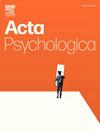Age- and sex-specific analysis of the impact of bipolar disorder in Iran and its provinces: Prevalence, incidence, and disability-adjusted life years: Global burden of disease 2021
IF 2.1
4区 心理学
Q2 PSYCHOLOGY, EXPERIMENTAL
引用次数: 0
Abstract
Objectives
This study sought to deliver a prevalence, incidence, and Disability-Adjusted Life Years (DALYs) of bipolar disorder in Iran, covering both national and subnational scales. The results were broken down by age group and sex, alongside an analysis of trends in bipolar disorder from 1990 to 2021. The estimates gathered were further compared to global averages to offer deeper insights into the prevalence and impact of bipolar disorder in Iran.
Methods
This study analyzed data from the Global Burden of Disease 2021 framework to assess various health metrics. Key indicators such as prevalence, incidence, and Disability-Adjusted Life Years (DALYs) were examined using all-age count estimates and age-standardized rates per 100,000 individuals. The analysis spanned the years 1990 to 2021, with results categorized by sex, age group, and geographic location. Furthermore, percentage changes over this period were calculated. To enhance the reliability of the findings, all reported estimates included a 95 % uncertainty interval.
Results
In 1990, the age-standardized prevalence rate of bipolar disorder in Iran was 770.09 per 100,000 individuals [95 % UI: 657 to 902], and by 2021, it slightly increased to 780 per 100,000 [95 % UI: 667 to 915]. The percentage change over the period from 1990 to 2021 was 0.01 %. In 2021, the total number of bipolar disorder cases in Iran was reported at 724,891, with a 95 % uncertainty interval ranging from 614,626 to 848,263. Among these cases, 376,813 were observed in females and 348,077 in males. Notably, individuals aged 10 to 24 accounted for 127,388 of the overall cases, making this age group the most affected. The age-standardized incidence rate (per 100,000) of bipolar disorder was estimated to be 52 [95 % UI: 44 to 61] in 1990 and 53 [95 % UI: 45 to 62] in 2021, reflecting a minimal change of 0.01 % over this period. Similarly, the age-standardized disability-adjusted life years (DALYs) rate (per 100,000) for bipolar disorder was recorded at 164 [95 % UI: 107 to 240] in 1990 and 166 [95 % UI: 109 to 241] in 2021, with an equivalent negligible change of 0.01 % from 1990 to 2021.
Discussion
In Iran, the burden of bipolar disorder has been found to exceed global averages, and due to demographic changes, young population, regional stressors this burden has grown significantly over the past three decades. Therefore, it remains crucial to focus increasing access to mental health care by increasing mental health care infrastructure in the country, especially in densely populated areas.
伊朗及其各省双相情感障碍影响的年龄和性别分析:患病率、发病率和残疾调整生命年:2021年全球疾病负担
本研究旨在提供伊朗躁郁症的患病率、发病率和残疾调整生命年数(DALYs),涵盖国家和次国家范围。研究结果按年龄组和性别细分,并分析了 1990 年至 2021 年躁狂症的发展趋势。本研究分析了《2021 年全球疾病负担》框架中的数据,以评估各种健康指标。采用全年龄段计数估计值和每 10 万人的年龄标准化比率,对流行率、发病率和残疾调整生命年(DALYs)等关键指标进行了研究。分析时间跨度为 1990 年至 2021 年,分析结果按性别、年龄组和地理位置分类。此外,还计算了这一时期的百分比变化。结果 1990 年,伊朗双相情感障碍的年龄标准化患病率为每 10 万人 770.09 例 [95 % UI:657 至 902],到 2021 年,患病率略有上升,达到每 10 万人 780 例 [95 % UI:667 至 915]。1990 年至 2021 年期间的百分比变化为 0.01%。据报告,2021 年伊朗躁郁症病例总数为 724 891 例,95 % 不确定区间为 614 626 至 848 263 例。在这些病例中,女性为 376 813 例,男性为 348 077 例。值得注意的是,在所有病例中,10 至 24 岁的人占 127 388 例,是受影响最大的年龄组。据估计,1990 年躁狂症的年龄标准化发病率(每 10 万人)为 52 [95 % UI:44 至 61],2021 年为 53 [95 % UI:45 至 62],这一时期的变化极小,仅为 0.01%。同样,双相情感障碍的年龄标准化残疾调整生命年率(每 100,000 人)在 1990 年为 164 [95 % UI:107 至 240],2021 年为 166 [95 % UI:109 至 241],从 1990 年到 2021 年的变化相当于 0.01 %,可以忽略不计。因此,在伊朗,尤其是在人口稠密地区,通过增加精神卫生保健基础设施来提高精神卫生保健的可及性仍然至关重要。
本文章由计算机程序翻译,如有差异,请以英文原文为准。
求助全文
约1分钟内获得全文
求助全文
来源期刊

Acta Psychologica
PSYCHOLOGY, EXPERIMENTAL-
CiteScore
3.00
自引率
5.60%
发文量
274
审稿时长
36 weeks
期刊介绍:
Acta Psychologica publishes original articles and extended reviews on selected books in any area of experimental psychology. The focus of the Journal is on empirical studies and evaluative review articles that increase the theoretical understanding of human capabilities.
 求助内容:
求助内容: 应助结果提醒方式:
应助结果提醒方式:


